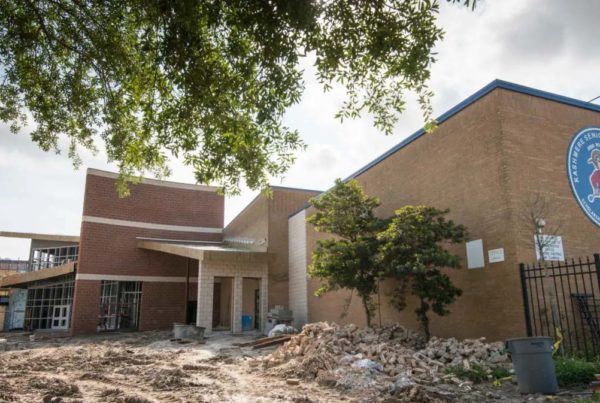From The Texas Tribune:
A private border wall built along the Rio Grande in South Texas could collapse during extreme flooding, according to a federally commissioned inspection report that the government sought to keep secret for more than a year.
The 404-page report, produced by the global engineering firm Arcadis, confirms previous reporting from ProPublica and The Texas Tribune. It also shows for the first time that the federal government independently found structural problems with the border fencing before reaching a settlement agreement with the builder, Fisher Industries, in May.
Under the agreement, which ended a nearly three-year legal battle between the International Boundary and Water Commission and Fisher Industries, the company must inspect the fence quarterly, remove bollards and maintain a gate that would allow for the release of floodwaters. It must also keep a $3 million bond, a type of insurance, to cover any expenses in case the structure fails.
Engineering and hydrology experts told the news organizations the bond is inadequate to cover the kind of catastrophic failure described by Arcadis and raised concerns that the federal government’s decision to settle the case cuts against the report’s findings.
The company modeled different scenarios using the extreme weather conditions caused by Hurricane Beulah, a 1967 storm that dumped about 30 inches of rain in some areas of the border region and caused the banks of the Rio Grande to overflow. The modeling showed that the fence “would effectively slide and/or overturn” during major flooding, and that it starts to become unstable during much smaller and more frequent floods.
According to the report, the fencing doesn’t meet basic international building code and industry standards and has a foundation far shallower than border barriers built by the federal government.
“Every single conclusion in the report points to it not needing to be there and shows it is actually negatively affecting the area,” said Adriana E. Martinez, a professor and geomorphologist at Southern Illinois University Edwardsville. (She was not involved with the report.)
Martinez, who studies the impact of border barriers in South Texas, questioned how much more evidence the state and federal governments need to take down the fencing and prevent future construction along the Rio Grande.
Arcadis referred questions about its assessment to the Department of Justice, which represented the IBWC in the lawsuit, arguing the fence violated a treaty with Mexico that requires both countries to approve any development that can affect the international boundary. A DOJ spokesperson declined to answer specific questions about the settlement or about why the government fought the release of the report.
The news organizations obtained the report on Nov. 15 after multiple Freedom of Information Act requests and 15 months of back-and-forth with the federal government, which initially denied the request. The DOJ reversed course and released the report after ProPublica attorneys threatened legal action.
As part of the settlement, federal officials ordered that Fisher Industries and its subsidiaries destroy all copies of the Arcadis report, alleging that it contained “proprietary information.”
“Reading this and seeing the settlement that came out of this, it’s as though they completely disregarded the Arcadis report,” said Amy Patrick, a Houston forensic structural and civil engineer and court-recognized expert on wall construction. “I can see why they were dragging their heels so much on letting it get out because [the report] basically completely dismantled this idea that the fence will be OK.”
Mark Courtois, an attorney for Fisher Industries, said that the construction company “strongly disagreed with the opinions in the Arcadis report and refuted those opinions to the satisfaction of the IBWC.” He said the company worked with the IBWC, which is charged with oversight of the international treaty, to “reach a mutually agreeable resolution of all matters pertaining to the fence, including any issues raised by the Arcadis report.”
“Construction of the fence was completed nearly three years ago, and we continue to be confident in its design and construction,” Courtois said.













